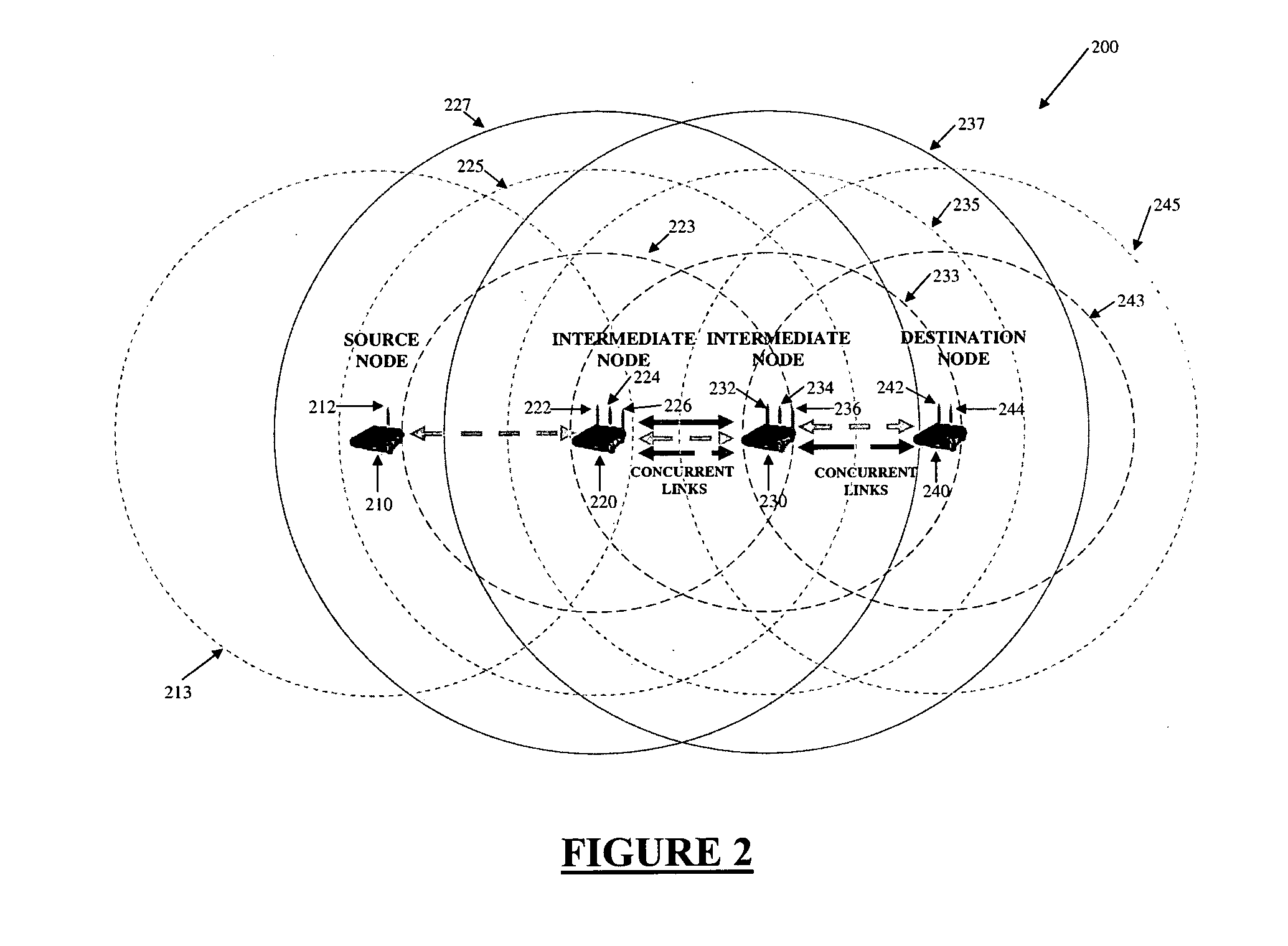Discovery of multiple inter-node links in wireless multi-hop networks
a multi-hop network and wireless technology, applied in the direction of digital transmission, data switching by path configuration, wireless commuication services, etc., can solve the problems of not supporting full-duplex operation, limiting scalability and performance degradation with increasing path length,
- Summary
- Abstract
- Description
- Claims
- Application Information
AI Technical Summary
Problems solved by technology
Method used
Image
Examples
Embodiment Construction
[0033]The present invention recognizes that nodes in wireless multi-hop networks, and specifically in ad-hoc and mesh networks, are increasingly being equipped with multiple wireless network interfaces (radios) operating on orthogonal channels to achieve better utilization of the frequency spectrum. In addition to reducing interference via increased channel diversity, these additional interfaces can be used to create multiple concurrent links between adjacent nodes, i.e. nodes within single-hop range of each other.
[0034]Information about the availability of multiple links between nodes provides the opportunity to increase the overall performance of the network by optimally balancing traffic between the set of available inter-node links. This optimization can be done locally (independent of routing) and in near real-time, which provides the opportunity for dynamic adaptation to variations of system parameters such as channel capacity, interference, traffic load etc. The result is a m...
PUM
 Login to View More
Login to View More Abstract
Description
Claims
Application Information
 Login to View More
Login to View More - R&D
- Intellectual Property
- Life Sciences
- Materials
- Tech Scout
- Unparalleled Data Quality
- Higher Quality Content
- 60% Fewer Hallucinations
Browse by: Latest US Patents, China's latest patents, Technical Efficacy Thesaurus, Application Domain, Technology Topic, Popular Technical Reports.
© 2025 PatSnap. All rights reserved.Legal|Privacy policy|Modern Slavery Act Transparency Statement|Sitemap|About US| Contact US: help@patsnap.com



